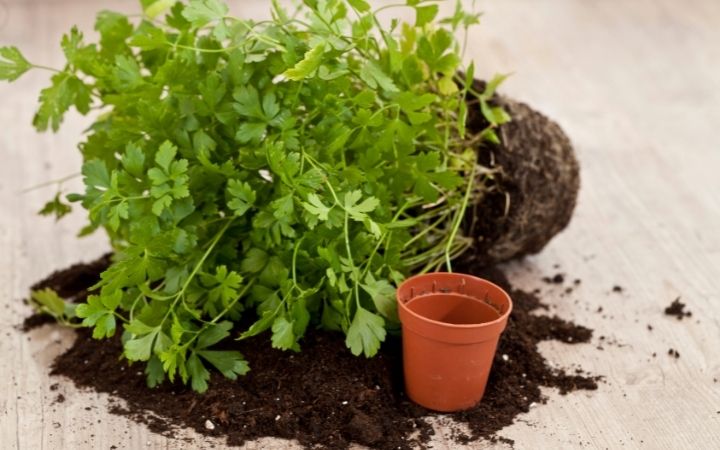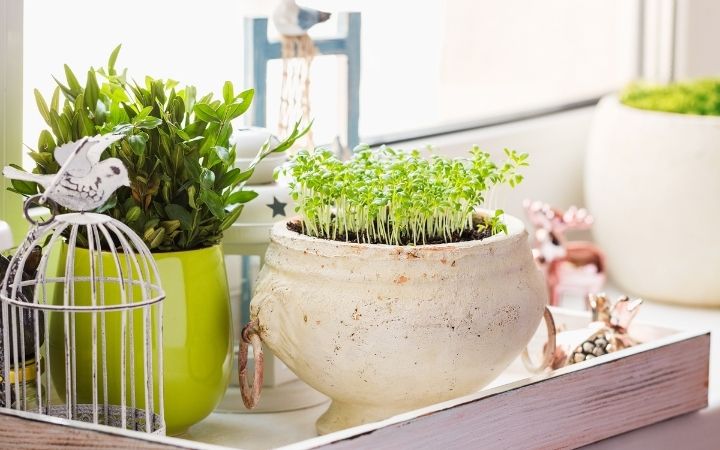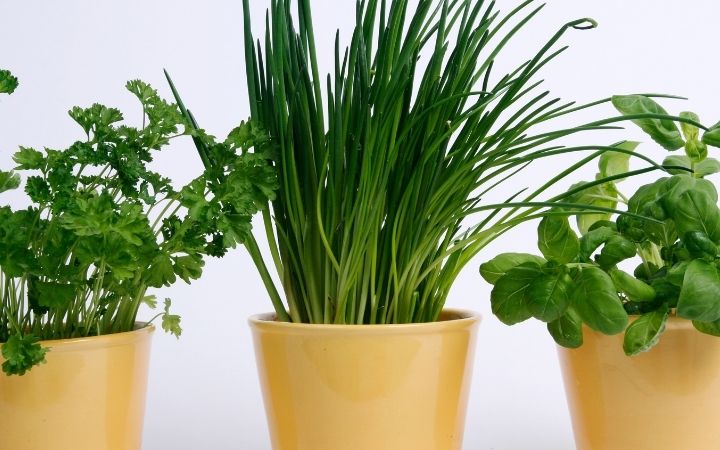How Long Does Parsley Take to Grow?
You may wonder how long it will take to grow parsley, especially if you propagate it from seed. It pays to learn how to grow parsley from seed rather than just buy a mature plant if you have the patience. You will feel more fulfilled as a gardener by raising this herb in your garden.

The majority of parsley varieties will take 70 to 90 days to germinate and reach maturity. However, it is best to grow it from seed sometime in the spring and extend into summer.
Info About Parsley as a Plant
The biennial plant we know as parsley has its roots in Europe. But it is well known in the US as an everyday staple in many high-end restaurants and home kitchens. American diners are probably familiar with both the curly-leaf parsley and the flat-leaf parsley because of this.
What is not so well known is that almost all plant parts are edible – yes, the leaves, stems, and even the taproot can be eaten. This makes planting parsley a worthwhile effort every year, especially if you like the way it tastes.
You can also learn how to grow parsley in containers if you live in a small place like an apartment or condo. Parsley is not fussy, so you can quickly grow it even if the only space available is a sunny windowsill.
The Different Types of Parsley
Though there are sub-variants, you will find two main types of parsley plants. So, you should either know how to grow flat-leaf parsley or learn how to grow curly parsley instead. Parsley, in general, originated from Europe, but nowadays, you may encounter variants such as Japanese parsley as well.
You may notice that chefs may prefer the flat-leaf variant because of its taste. However, that doesn’t mean you should shun curly parsley altogether. Both variants are equally flavorful, and choosing between the two is a question of personal preference.
When Should You Plant Parsley, Plus Our Top Tips
You should plant the parsley seeds sometime in the spring. If there is still some frost at that time, start the germination indoors about six weeks before the onset of spring. That way, you can just transplant them into your outdoor garden later on.
You may check the soil for warmth if you’re not sure it is time to plant parsley. Ideally, it should be at least 70 degrees Fahrenheit to make it conducive for your parsley sprouts to grow. Don’t panic if the seeds seem to germinate slowly – that is normal. You can wait up to four weeks for the germination to progress.
If you want to give the seeds a head start, try immersing them in lukewarm water for around 24 hours so that you hasten germination. Then plant them as you normally would.
How Do You Choose and Prepare a Parsley Planting Site?
Parsley will love a sunny spot in your garden, whether on your kitchen windowsill or in your backyard. Fortunately, parsley growing in pots doesn’t take up a lot of space which is good news for condo and apartment dwellers. You should plant the parsley seeds in moist, well-draining soil with a pH of 6.0 to 7.0 for best results.

It is a good idea to grow your parsley in pots even if you have a sizable backyard. This makes it easier to change the location of your parsley pots if you are reorganizing your garden. You might also have to bring your parsley indoors if the weather turns foul outside.
How to Care for Your Growing Parsley Plant
You’ll be glad to learn that your parsley plant is not a picky eater. You will just need to plant the parsley seeds in rich soil and maybe add some mild fertilizer. A good choice for fertilizer is vermicompost since it does support parsley’s healthy growth.
You should make an effort to keep the soil itself moist most of the time. Take it easy, though, since you might overwater the soil, which would encourage root rot. Overdry soil, on the other hand, is also dangerous and may quickly kill your parsley plant.
Growing parsley is very rewarding and much easier to grow than raising other herbs since there aren’t many pests or diseases that target parsley. Aphids, fungus, and mildew can pose a problem sometimes, though.
Parsley Harvesting and Growing Guidance
Since the parsley plant is biennial, you may harvest the leaves and upper stems in the first year. After that, the leaves are generally used directly in dishes.
To increase the flavor profile, you may not have known that the stems may be integrated into your pesto or Italian chimichurri. Just be careful about how much you add to a dish since the stems have a more robust flavor than the leaves.
The harvested leaves and stems will not be as flavorful as the previous year’s harvest in the second year. But that is the right time for the taproot to be harvested for use in salads.
Raising this plant from seeds is usually better if you are on a budget and want a bigger harvest. But it is also possible to buy young parsley in pots if you don’t want to wait for the seeds to germinate and grow.
Pests That Parsley is Prone to And How to Eradicate Them
So, now that you’re learning how to plant parsley seeds, you need to know that certain pests may harm parsley.
As stated earlier, aphids like parsley. Aphids are dangerous because they can support the spread of viral infections such as the Carrot motley dwarf. This kind of virus comes in two forms: the Carrot Mottle Virus and the Carrot Redleaf Virus. These two viruses have to be present simultaneously for a Carrot Motley Dwarf infection to happen.
But fungus, in the form of blight and mildew, may also harm your parsley plant.
One way fungus can reach your parsley garden is when the parsley seeds themselves are infected already. The fungus can also travel by air to land on the parsley itself. And if the water you spray on your plant has fungus, that can also contaminate your parsley.
When the fungus is the problem, you can take a preventive approach, as follows:
- First, inspect the parsley seeds well before you plant them.
- Remove any seeds that are already soft and rotting before planting.
- Plant seeds only in soil that is well-drained and exposed to full sun.
- If a fungal infection is evident, avoid leaving the plants in full shade. Shady spots only encourage the spread of the fungus.
- If the fungal infection seems to be spreading, you can apply a fungicide at the base of the plant. Avoid using the fungicide in the upper parts of the plant.
Parsley Companion Plants
You may notice that there are certain companion plants compatible with parsley, especially if you plant outdoors. Some vegetables that you can pair off with your parsley plant are:
- Tomatoes
- Onions
- Corn
- Chives
- Carrots
- Asparagus

In return, parsley can benefit other plants too. For example, asparagus beetles are discouraged from flourishing when parsley leaves are sprinkled on asparagus. On the other hand, roses develop a more appealing scent when you plant parsley at their base.
Parsley Troubleshooting Tips
Growing parsley in pots is one way to keep your parsley plant as safe as possible. This will help you control any factors that can affect the health of your plant.
For example, you can monitor the state of the soil so that fungus can be immediately detected and eradicated. You may estimate the hours of sunlight available for your potted parsley while measuring the amount of water you give.
It also makes sense to keep growing parsley in pots since you can keep any infection in check so it doesn’t spread further. And if you plan to give away parsley to friends and family, later on, having these in pots makes it more convenient.
The Nutritional Benefits of Parsley
Parsley may have its culinary uses because it tastes nice, making it ideal to use in many dishes. But did you know that parsley can also be good for you nutritionally?
Yes, that’s right, eating parsley can help you consume certain beneficial nutrients. For example, parsley is a powerhouse source of Vitamins A, C, and K. You can also get your potassium and folate by eating parsley.
Parsley is also known for its antioxidant properties, which can lower the level of free radicals in your body. (Free radicals are believed to contribute to certain diseases.) So chow down on parsley if you want your fair share of Vitamin C, carotenoids, and flavonoids (all three are considered potent antioxidants.)
The fact that parsley tastes nice means you will probably add more parsley to your dishes, which is a bonus.
Italian Dishes to Craft With Parsley
Before you start buying parsley seeds and plants, you might want to know how you can infuse parsley into your weekly menu dishes. That way, you can gauge how much parsley you will need to grow at home. In addition, you can consume more parsley by going Italian. Yup, many Italian dishes taste great if you cook them with parsley.
You can try making a Parsley and Lemon Pesto for starters. Then, you can use this pesto in your pasta dishes for a late brunch or early dinner. Or maybe you could serve a Minestrone Soup for dinner instead? That would help spread the love around, especially on cold nights when your friends or family are craving comfort food.

The point to all this is that parsley is not just a bland herb added for color to your food. On the contrary, you can enjoy many benefits that come with consuming parsley if you’re creative enough in the kitchen.
You just need patience and persistence when planting your parsley in pots or your backyard – that way, you will have a steady supply for your consumption and enjoyment.

Community of passionate writers and content creators who share a love for Italian heritage, culture, travel, food, and the Italian-American community. Our mission is to celebrate Italy’s rich history and traditions and connect with others who share the same passion.

